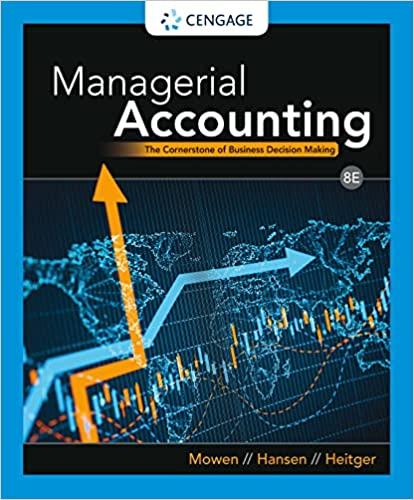Question
Question The financial statements of Procter & Gamble Company provide the context for this question which focuses on long-term debt and stockholders' equity. This question
Question
The financial statements of Procter & Gamble Company provide the context for this question which focuses on long-term debt and stockholders' equity. This question demonstrates how the concepts in this module are applied by publicly-traded corporations, and includes the financial impact of the Covid pandemic.
You will need to access the 10-K filing of Procter & Gamble Company for the year ended June 30, 2021. You can accomplish this in many ways. Because it is useful to gain experience with the Securities and Exchange Commission (sec.gov) website, we recommend this website. Go to sec.gov, then select "Filings," and look for a search box in the upper right-hand corner of the screen. Enter "Procter & Gamble" in the search box (be careful with spelling and use the ampersand), then select "10-K annual reports and 10-Q quarterly reports," then select "10-K: Annual report for the year ending June 30, 2021." A table of contents that you will find useful is included at the beginning of the annual report.
Recent financial statements reflect the impact of the Covid pandemic on the organization's financial condition, and this impact varies widely. In organizations where the impact has been highly negative, continued existence may be at stake. Many organizations have turned to survival strategies such as selling assets, incurring debt, and suspending dividends. For other organizations, the impact of the Covid pandemic has not resulted in a deterioration of their financial condition.
Review the relevant Consolidated Financial Statements and the related disclosures in the relevant Notes in the 10-K annual report submitted by Procter & Gamble Company for the year ending June 30, 2021, and respond to the following questions. (Procter & Gamble, like many other corporations, refers to their bonds payable as notes; they use the terms "bonds" and "notes" interchangeably.)
1. Did the company increase the level of their long-term debt during the fiscal year ended June 30, 2021? Provide data to support your response.
2. Did the company decrease the amounts paid in dividend during the year ended June 30, 2021 in comparison with the amounts paid during the year ended June 30, 2019? Provide data to support your response.
3. Did the company experience a decrease in diluted earnings per share for the year ended June 30, 2021, in comparison with diluted earnings per share for the year ended June 30, 2019? Provide data to support your response.
4. The amount of long-term debt expected to mature during the fiscal year ended June 30, 2021, was reported in the financial statements for the year ended June 30, 2020, as the current portion of long-term debt due within one year. What is the dollar amount of the long-term debt that was expected to mature during the fiscal year ended June 30, 2021? (consult the relevant Note in the 10-K)
5. Some long-term debt is denominated in the Euro rather than the U.S. dollar. Explain how the practice of issuing debt in a currency other than the domestic currency (assume the U.S. dollar is the company's domestic currency) creates exposure to gains and losses related to currency fluctuations.
6. Explain why the amount reported for Treasury Stock as of June 30, 2021, is subtracted from stockholders' equity.
7. The company is authorized to issue 200,000,000 shares of Non-Voting Class B preferred stock. As of June 30, 2021, what is the amount the company reported as having been received from the issuance of the Non-Voting Class B Preferred Stock?
8. The company has issued Convertible Class A preferred stock. Was any of the Convertible Class A stock converted during the fiscal year ended June 30, 2021?
9. Explain why the balance in "Common Stock, stated value $1 per share" is so small in relation to the balance in the "Additional paid-in capital" account.
10. As of June 30, 2021, what percentage of the company's total assets was financed by retaining present and past profits in the company (as opposed to distributing those profits to shareholders in the form of dividends)?
Step by Step Solution
There are 3 Steps involved in it
Step: 1

Get Instant Access to Expert-Tailored Solutions
See step-by-step solutions with expert insights and AI powered tools for academic success
Step: 2

Step: 3

Ace Your Homework with AI
Get the answers you need in no time with our AI-driven, step-by-step assistance
Get Started


